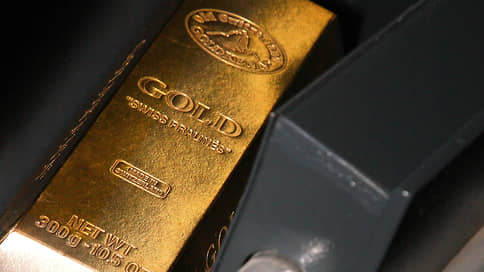The assets of exchange-traded funds investing in gold fell below 2.6 thousand tons for the first time since the beginning of 2020. However, the price of gold has not fallen
[ad_1]

The total assets of exchange-traded funds (ETFs) investing in gold fell below 2.6 thousand tons for the first time since the beginning of 2020. Since the beginning of the year they have decreased by 65 tons. Interest in gold is declining amid high rates on dollar instruments and the active growth of the American stock market. However, due to the continued interest on the part of central banks of developing countries, the price of gold is kept above $2,000 per ounce.
According to Bloomberg, last week the assets of exchange-traded funds (ETFs) investing in gold fell below 2.6 thousand tons, updating the minimum since January 2020. Since the beginning of 2024, assets have decreased by more than 65 tons. The almost continuous decline in assets continued for the eighth month in a row, and during this time they decreased by 333 tons. Data from Emerging Portfolio Fund Research (EPFR) also indicate continued sales of the precious metal. According to Kommersant’s estimates, based on reports from Bank of America (taking into account EPFR data), from the beginning of the year to February 7, the volume of funds withdrawn from gold funds exceeded $3 billion, and in the last two weeks alone the outflow amounted to $1.6 billion.
International investors are cutting back on gold amid high money market rates and a rising stock market. Since the beginning of the year, the American S&P 500 index has grown by almost 6% and for the first time in history exceeded the level of 5 thousand points. On Monday, February 12, it reached 5046.4 points. “The interest rates of global central banks remain at high levels, and in anticipation of the completion of the rate hike cycle, investors are seeking to fix historically high yields in bonds and money market instruments,” notes Oleg Novikov, investment director at Astero Falcon. Money market funds have attracted more than $210 billion from clients since the beginning of the year, according to EPFR.
At the same time, for the second month in a row, gold quotations on the world market did not fall below $2,000 per troy ounce.
According to Investing.com, on Monday the price of the precious metal reached only $2016.5 per ounce, which is only 0.4% lower than Friday’s closing value. “Despite the lack of interest from retail investors, global central banks increased the share of gold in gold and foreign exchange reserves throughout last year, and this trend is likely to continue this year, which will provide some support for quotes,” says Oleg Novikov.
According to the World Gold Council, in 2023 central banks purchased 1.04 thousand tons, which is close to the absolute record of 2022 (more than 1.08 thousand tons). At the same time, the largest buyers are the financial regulators of Turkey and China. “Central banks of developing countries are buying gold for reserves in the face of increasing “toxicity” of the dollar and euro, including the risks of freezing such assets as a result of sanctions, in the face of growing geopolitical contradictions and slow global de-dollarization,” notes Sovcombank chief analyst Mikhail Vasiliev. He does not rule out the possibility that this year prices for the precious metal may reach a historical high and move into the range of $2,200–2,300 per ounce. At the same time, quotes, along with purchases by central banks, will be supported by a softer monetary policy of the Federal Reserve and strengthening geopolitical contradictions (primarily between the United States and China).
Interest in the precious metal remains on the Russian market. According to InvestFunds, in January, private investors invested more than 0.5 billion rubles in mutual funds focused on investing in gold. Over four months of continuous inflow, the volume of such investments exceeded 3.3 billion rubles. This behavior of Russians, according to Alfa Capital portfolio manager Dmitry Scriabin, is not due to the search for profitability, but to the desire to reduce risks, including the weakening of the ruble. Since the beginning of the year, the dollar exchange rate on the Moscow Exchange has increased by 1%, to 91.3 rubles/$, and in the last three weeks alone it has gained almost 4%.
[ad_2]
Source link





